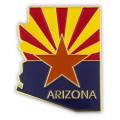
Visit our community sponsor

Thanks:
0

Likes:
0
-
Senior Member

Driveshaft Clearance
What should the driveshaft clearance be from the transmission yoke to the v frame cross member (floor)? I have about 3/8" with an IRS. If I raise the transmission the driveshaft will not be parallel.
-
Seasoned Citizen

A driveshaft for an IRS application is not going to move around near as much as one on a solid axle application. The only movement is what the engine / trans and rear end elastomer mounts will allow which unless they are worn out should be very little. 3/8" clearance may be enough but I'd prefer a bit more and wonder why you can only achieve 3/8". And your concern about the driveshaft not being parallel is not clear to me. Parallel to what? I've never had a concern with a driveshaft being parallel to anything but the drive shaft angle, trans output angle, and pinion angles must all be within an acceptable operating range.
-
You don't want the driveline and joints to be straight, they need to move some to lubricate.
-
Senior Member

Maybe parallel was the incorrect wording. The driveshaft is level with the IRS, if I raise the transmission the driveshaft will then be higher at the transmission vs. the IRS.
I did not use the two transmission mount spacers supplied by FFR for the 700R4 transmission. I machined a out of an aluminum block the same height as the spacers. I did not like the idea of the transmission being held by two round spacers.
I can machine a wedge/spacer to raise the transmission however I thought the idea was to keep the transmission and IRS on the same plane
20180524_002806764_iOS.jpg
-
There are some good info on this, try search or google, that would be better than me! It is important.
-
Seasoned Citizen

Like 1933 said, you want some driveshaft angle (~1-degree) to help spread the lube around the needle bearings on the u-joints. While you don't mention what induction you're running if it's a carb you'll notice that the manifold mounting flange is angled down in the front so that the carb sets level (think fuel bowls) when the engine is installed with a slight angle down at the rear. Only heads-up drag racers set up their drive shafts with no angle to minimize every bit of drivetrain loss. Your driveshaft manufacturer will have an opinion on a range of angles that are acceptable. The subject has been covered before in great detail here but I'll briefly leave you with this -- set-up your drivetrain so that you have at least .5-degree (1-deg is better IMO) of u-joint angle but no more than the recommended maximum angle; and then set your pinion angle so that it is exactly the same as your trans output shaft angle when under load (acceleration). Since the rear end will want to rotate the pinion higher under load you will be setting the pinion angle to compensate for that rotation.
 Posting Permissions
Posting Permissions
- You may not post new threads
- You may not post replies
- You may not post attachments
- You may not edit your posts
-
Forum Rules

Visit our community sponsor





 Thanks:
Thanks:  Likes:
Likes: 


 Reply With Quote
Reply With Quote